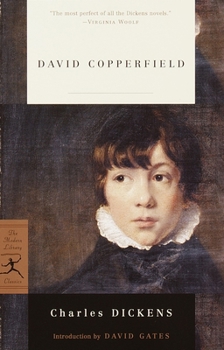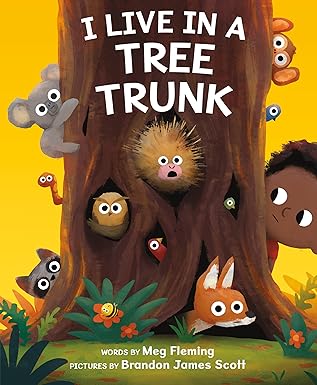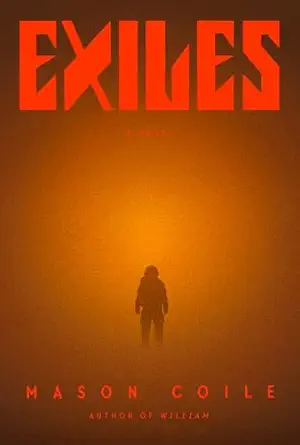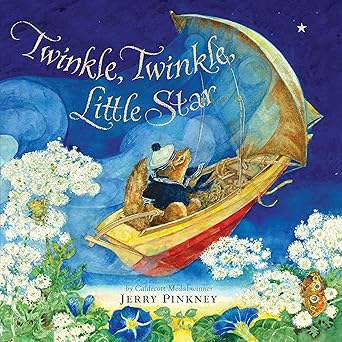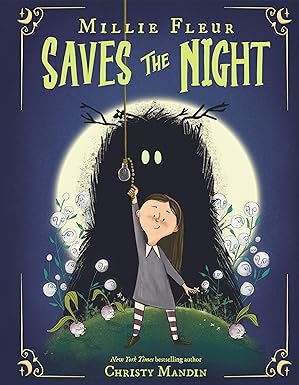As I am looking through my book journal for 2025 and reflecting on my favorite reads, I realized I neglected to share another of my favorites from the year: The Secret of Ventriloquism by Jon Padgett.
Monday, December 15, 2025
The Secret of Ventriloquism by Jon Padgett
Monday, December 8, 2025
David Copperfield by Charles Dickens
Since my mom taught me to read, we have swapped book recommendations, but over the past few years we've formed a structured book club of two. We've read War and Peace, Don Quixote, The Count of Monte Cristo, and The Lord of the Rings, each over the course of a year. This year I asked to read Charles Dickens, since as a creative writing/English lit major I consider it an embarrassment that I've never read any of his work. I mean, I love The Muppet's Christmas Carol, but it isn't quite the same thing, is it?
I chose David Copperfield for three reasons:
1) It's over 800 pages, close to our meaty goal of 1000 pages.
2) There was a copy taking up significant space on my bookshelf, right next to similarly untouched Bleak House.
3) Virginia Woolf's blurb is on the cover calling it "The most perfect of all the Dickens novels."
I went in prepared to be a little bored. The vague sense I had of Dickens was that he was long-winded, needlessly wordy ("He got paid by the word!" people holler, as if that is deterrent rather than impressive), and moralistic. I also wondered if his books were all about miserable orphan boys who make good through steadfast kindness and surprise rich relations.
Well, David is at one point a fairly miserable orphan boy and he does make good with the help of a rich relation and his own diligence. But! I was not bored and there were only about two chapters I skimmed because they were so weepy. Occasionally it seemed Dickens popped through the veil of fiction, either through clumsy structure (a scene observed through eaves dropping that tests the limits of human understanding; a character's running commentary cringingly meant to bring humor to melodrama), whiplash character changes, or the semi-frequent interruptions of plot to state some sort of thesis on being hard-working and productive.
Overall, I was impressed with just how continually entertained I was by the storytelling. The characters are so delightfully drawn, I feel like I will carry them with me much longer than I do others. His aunt Betsey was our hero: At one point I texted my mom: "Janet! Donkeys!" and I imagine that will be a phrase we can call to each other through the years. His villains were delicious: the writhing, unctuous Uriah Heep; steely Miss Murdstone; and my favorite, the fantastically bitter Rosa Dartle. Let me just take a moment for Rosa Dartle. Take this first description of her:
She was a little dilapidated – like a house – with having been so long to let; yet had, as I have said, an appearance of good looks. Her thinness seemed to be the effect of some wasting fire within her, which found a vent in her gaunt eyes.
When she dispenses with her halting manner of speech and lets forth with the full vent of that "wasting fire within her," I could not put the book down. It was so vicious, so intense, so full of emotion and fury.
I'm satisfied with my first Dickens experience and at some point will pick up another. Probably Great Expectations, because there's a lady called Haversham I'm looking forward to meeting.
-Michael G.
Monday, December 1, 2025
Oathbound by Tracy Deonn
Monday, November 24, 2025
I Live in a Tree Trunk by Meg Fleming; illustrated by Brandon James Scott
This is a cute book exploring animal homes. Students will delight in guessing the animals that peer out of their dwellings, such as a gopher’s mound, a sea otter’s bay, an owl’s nest, etc.... Some animals, like birds and gorillas, share the same name for their dwelling (nest)! Among the animals featured in this book are: farm dwellers (sheep, donkey, horse, llama, chicken, pig, goat), tree dwellers (monkey, sloth, koala, snake), and den dwellers (porcupine, raccoon, fox, skunk, opossum). For ages 4-8.
Monday, November 17, 2025
Poems & Prayers by Matthew McConaughey
In his new book Poems & Prayers, the actor Matthew McConaughey offers up some intimate thoughts in both prose and verse, divided into themed sections. I found this work to be a mixed bag. Some of the poems seem contrived, while others are beautiful, simple, and insightful. The pages of prose often make for thoughtful reading. Overall, the book cries out for the guidance of a sharp editor.
In some poems the wordplay is quite clever, while in others it's overwrought. In a poem called "Daymares" - about small, almost unnoticeable daily habits we have that wound those close to us - McConaughey remixes a common expression in the line, "the pets that we peeve." This made me laugh; after all, who hasn't left a beloved pet feeling that way? This is McConaughey at his most witty.
There's also wordplay that reads more like word salad: "I take a scroll down the Rolodex of my memory's lane." You really have to work to wrap your mind around this awkward line. It sounds to me - who spent several years in an earlier career creating and evaluating therapeutic programs for nursing home residents - very much like something a person with dementia might say.
Some poems are so packed with metaphor and cryptic symbolism that the meaning is lost on me. The poems "Fallen Leaves" and "The Mess I Made" are examples. Removing a few stanzas would make these poems more polished and coherent. A poem called "Capably Able" is full of clever rhymes and imagery, but there is so much going on in it that I can't make sense of the whole.
Then there are the prayers, most of them written in verse form. McConaughey expresses a traditional Christian religiosity, in which he offers prayers to a father figure, examining his own flaws and asking forgiveness and redemption. These felt a bit exhibitionist to me, yet his discussion of why we pray is perceptive.
What I found much more interesting in both his prose and his poetry is the expression of another kind of spirituality he has but never labels as such: a distinct sense of the yin and yang in the operations of the universe. In a reflection on page 75 he wrote: "Consequences go both ways. With every decision, choice, action, there will be a give with the take, a credit with the debit...something good and something bad." On another page: "If you make a profit in one place, you're gonna get a debt in another."
Elsewhere, a yin/yang sensibility is expressed by an entire poem called "Back to the Future," every line a reference to complementary opposites. On another page is an untitled, elegant little poem about doers and dreamers; they have opposing qualities and the world needs both types of people. McConaughey's book highlights his belief in and practice of Christianity while not overtly acknowledging this more intuitive side of his view of life.
McConaughey's prose feels less forced, and in places is just as lyrical as his best poems here while summing up some worthy insights. He believes in the necessity of difficulties in life in order to mature. He believes in post traumatic growth for those willing to take a hard and critical look at themselves. He is big on personal accountability.
Crown Publishing slipped up with this publication, though; the book needs tighter editing. There are grammatical errors throughout - apostrophes where they shouldn't be, and redundancy of both words and thoughts within single sentences in several places, as well as excess in some of the poems. Correcting these errors and trimming away some of the confusing lyricism would result in a more polished book.
- Marianne W.
Monday, November 10, 2025
Exiles by Andrew Pyper (writing as Mason Coile)
"I read this in 24 hours," was part of the recommendation I received from a library visitor the other day. Mason Coile's other horror novel about artificial intelligence (W1LL1AM) has been on my list for a few months, but her enthusiasm about Exiles pushed this to the front of the list.
Monday, November 3, 2025
Twinkle Twinkle, Little Star ill. by Jerry Pinkney
This is a beautiful rendition of the beloved children’s song “Twinkle Twinkle, Little Star” illustrated by Caldecott Medal winner Jerry Pinkney. In this story, a curious chipmunk leaves her nest to explore the world around her. Along the way, she discovers a star-like image in a twirling white seed pod, the blossoms of a tree, a spider's web, and the glow of fireflies. As the day closes the chipmunk climbs into a robin’s nest and later into a sail boat in a dreamlike quest to reach the stars. Eventually she returns to her home on the back of a white swan.
-Julie B.
Monday, October 20, 2025
Millie Fleur Saves the Night by NY Times Bestselling Author Christy Mandin
When Millie Fleur moved into the town of Garden Glen, she discovered the people were afraid of the dark and turned their lights off. Millie knew that the dark wasn’t scary and that there were many enchanting things to find in the dark such as a beautiful moon garden and nocturnal animals. She baked delicious moon pies to welcome the dark back. Soon the night creatures including raccoons, owls, deer, and many more reappeared.. And slowly the townspeople became braver, turning out their lights and discovering how amazing and beautiful night can be.
-Julie B.
Monday, October 13, 2025
Bloodmarked by Tracy Deonn
Monday, October 6, 2025
The I Love You Book by Todd Parr
This colorful book celebrates the unconditional love between parent and child in various situations such as when playing peek-a-boo-boo, feeling sad, scared, brave, cuddling, and other times throughout the day. Reassures the child that they are loved every day no matter what the situation.
Age Group: 0-6.
- Julie B.
Julie B. is a classroom volunteer with Ready Readers, a non-profit organization that strives to expand literacy for young children in low-income communities through high-quality books, strong relationships and literacy-related experiences.
Monday, September 29, 2025
The Bad Seed by William March
William March's Rhoda has seeped into our cultural lexicon, so that like The Stepford Wives or Cujo, you don't need to have read the book (or seen the movie) to know that a well-dressed, polite child wearing formal, old-fashioned clothes is most likely a psychopathic killer. This child doesn't just braid her own hair, she loops them into "hangman's nooses." Her shoes have iron cleats to conveniently transition from outerwear to deadly weapon. You better hope you don't have anything she wants.
Monday, September 22, 2025
The Children's Blizzard by Melanie Benjamin
The uncomfortable images the title of this book conjures up! I didn't want to know the story behind it. Like me, you may resist opening it, but once you have gotten past the first pages and been introduced to several characters, don't expect to come up for air for a while. In fact, expect your regular routine to be disrupted as you delay meals, sleep, and morning showers while your cat or dog complains of neglect. It is not only a compelling story but a shockingly revealing bit of history as well.
The story told herein is in many ways like a Little House on the Prairie for grown ups, but not in the gently told way of Laura Ingalls Wilder's books.
Remember all the catastrophes the Ingalls and Wilder families endured on the prairies - the fire that engulfed Laura and Almanzo's home, a locust plague that destroyed an entire year's crop, droughts that rendered the labor of other years useless? The chronic poverty, harsh weather, frequent new beginnings, and the relentless struggles to establish stability? These devastating setbacks weren't merely one extended family's bad luck; this was typical of farm life in the upper Midwestern territories in the 1800s. The Ingalls and Wilder families were just two of thousands that suffered such misfortunes repeatedly. One of the revelations to me in reading this historical novel was that of a dishonest campaign perpetrated in European countries to lure immigrants to the upper Midwest. The U.S. government wanted settlers. "Have you longed for the magic of a prairie winter, gentle yet abundant snow to nourish the earth, neither too cold nor too warm, only perfection in every way?" - an ad in a European newspaper might say. In fact the opposite was true; living and farming conditions on those plains in the 1800s were so rough that over 60% of the homesteaders that had been attracted by such advertising ended up abandoning properties and dreams to return to the unpromising circumstances they had hoped to leave behind in Europe and the eastern United States. Of those who stayed, many didn't survive.
This novelized account of that time and place concerns one particularly deadly catastrophe (the historic part) - the January 12, 1888 blizzard in Nebraska and the Dakota territory during which hundreds of people - the majority of them children - froze to death. Why mostly children? The book will tell you.
The best novelists are able to create a cast of characters who come from vastly different life experiences and are on differing trajectories when their paths cross and lives intertwine within the framework of a compelling story. Characters that give us new perspectives, making us see the world in ways we hadn't previously been able to. This novel does that, engaging readers with a small assortment of people and their varying motivations and motives, and the ways they help and hurt each other. On occasion the perspectives of wildlife do what people can't: foxes, hawks, wolves, coyotes, rabbits, even prairie dogs help us to see and feel what the earth is doing during this colossal storm. Through a hawk's eyes as it searches from the sky for a meal on the morning after the storm, we begin to see the cruel toll of the ghastly event in an impersonal way - briefly - before zooming back in to learn the fates of the individuals we have become so interested in.
Author Melanie Benjamin drew on archived news accounts and written memories of people who lived through the storm to create sympathetic fictional characters caught badly unprepared for this shattering event that in real life left so many dead, so many lives changed, and so many families and communities throughout the upper Midwest bereft. In this bittersweet novel much more unfolds after the storm - unimaginable pain, gradual healing, growth, a few surprises among the characters, occasional redemption. The unredeemable fate of one character in particular though - Gerda - will remain in my mind for a long time.
Thank you to patron Richard B. for recommending this informative, absorbing novel that I put off starting because of its title and then couldn't stop reading.
- Marianne W.
Monday, September 15, 2025
Legendborn by Tracy Deonn
Generations upon generations of history and legacy weave through the life of this 16 year old girl.


